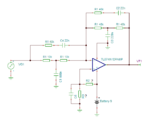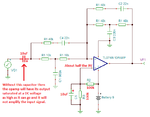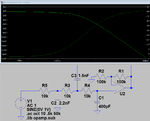KlausST
Advanced Member level 7
Hi,
I used the 7660 or equal with very high sensitivity circuit...OPAMP gain of 20 and a 16 ADC with 3VRef. Makes a resolution of 2.3uV/LSB.
A 3kHz analog signal filter and sampling with 10kHz with gives stable readings down to +/-1LSB.
At the 7660 output I have simple LC filters. Low ESR capacitors.
Four layer optimized layout hand routed).
****
So I´m sure there is a solution for your problem, too.
As said before. Capacitors are the one thing, PCB layout is the other. Unfortunately the worst of both will dominate.
Klaus
I used the 7660 or equal with very high sensitivity circuit...OPAMP gain of 20 and a 16 ADC with 3VRef. Makes a resolution of 2.3uV/LSB.
A 3kHz analog signal filter and sampling with 10kHz with gives stable readings down to +/-1LSB.
At the 7660 output I have simple LC filters. Low ESR capacitors.
Four layer optimized layout hand routed).
****
So I´m sure there is a solution for your problem, too.
As said before. Capacitors are the one thing, PCB layout is the other. Unfortunately the worst of both will dominate.
Klaus



